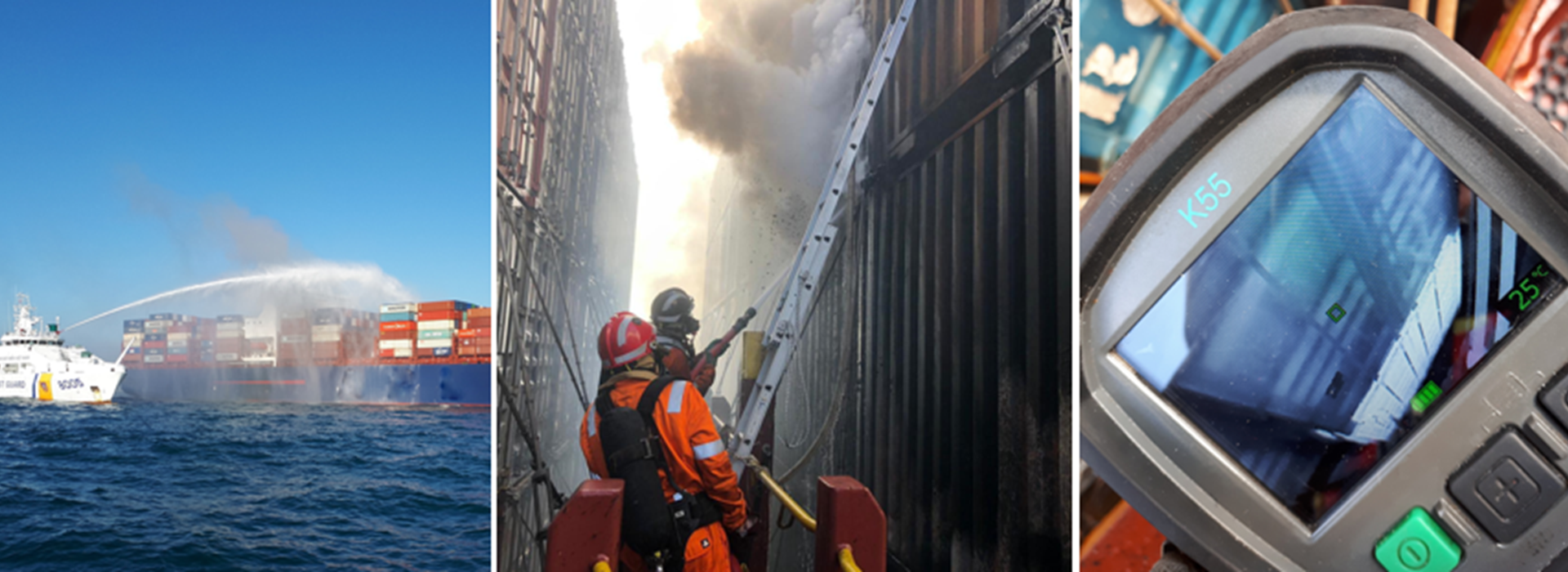Ok
The challenge
On a container vessel (115,060 dwt, capacity 9600 TEU) on passage from Shekou to Singapore, a fire broke out in one of the cargo holds. The ship had to interrupt the voyage and head to Vietnam waters. A SAR ship from Vietnamese Coast Guard immediately started firefighting. No injuries were reported.
The solution
The captain and the shipowner had called in the help of a firefighting team. With a salvage company in the lead, a salvage expert team was put together and took care of the mobilisation and logistics of a team and equipment to Vietnam.
The salvage expert team consisted of of international specialists supervised by a salvage master from the salvage company with support from a naval architect, other salvage officers and the specialist Emergency Response Team (ERT) from RelyOn Nutec consisting of a maritime firefighting expert, chemical expert and maritime firefighters.
Once on board, the first step was to assess safety on board by checking ship stability, the presence of harmful gases and vapours in the immediate environment and various compartments, the risk of fire spread and the risks posed by the dangerous goods on board the vessel.
The ERT, together with the chemical expert, took over the operational burden from the captain and crew with regard to personal safety and firefighting. The salvage officers supported the maritime tasks of the crew and the firefighting. The salvage master had the overall coordination of all parties on board including support vessels, local authorities and shore-based organisations.
The results
- Safety guaranteed
-
- Once on board, it turned out that the crew was exposed to carbon monoxide (CO) gases. The concentrations were too high to stay on board for any length of time. This was solved by repositioning the ship perpendicular to the wind.
- In order to limit unrest, permanent gas monitoring was installed within the accommodation and a fire watch was appointed on the bridge 24/7.
- Preventing fire spread and extinguishing the containers
-
- After a thorough analysis, the firefighting and deployment was taken over by the ERT.
- Through detailed survey and deployment of additional fire hoses, the cooling from fireboats could be stopped and this also prevented the large amounts of fire water entering the holds.
- Using cutting torches, holes were made in the burning containers and they were subsequently extinguished within a few days.
- Preventing an explosion in the hold
-
- Our daily gas measurements and inspections revealed a hold with an increasing concentration of flammable gas. Because a container carrying laminated metal plates had become submerged in the salt water, it functioned as a huge battery, forming hydrogen gas. By pumping away the extinguishing water, this reaction was stopped and an explosion was prevented.
- Aftercare and trust gained from captain crew and authorities
-
- The experience of an ERT that has been operational for over 30 years having experience with similar incidents gave peace of mind and confidence on board. This gave the captain and his crew the peace of mind they needed to catch up on sleep within one day.
- The ship's management was proactively informed of the possible psychological and physical consequences for their crew members after they had been exposed to stress and work overload for more than 48 hours, along with the effects of adrenaline. This allowed them to take measures and be prepared for possible complaints that almost always manifest themselves in persons who have been involved in such an incident on board.
